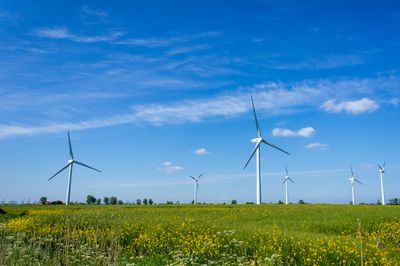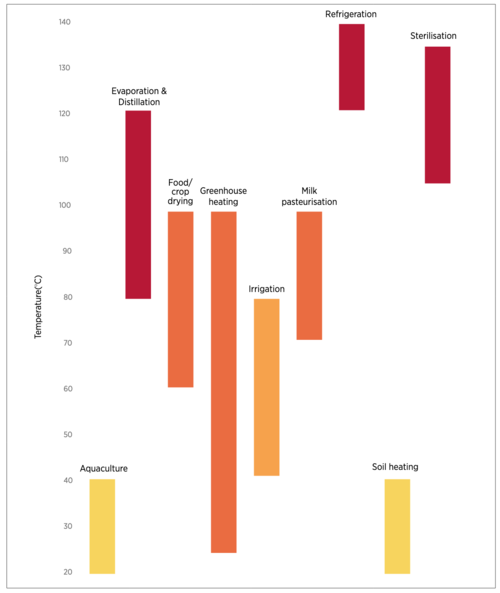Knowledge fuels change - Support energypedia!
For over 10 years, energypedia has been connecting energy experts around the world — helping them share knowledge, learn from each other, and accelerate the global energy transition.
Today, we ask for your support to keep this platform free and accessible to all.
Even a small contribution makes a big difference! If just 10–20% of our 60,000+ monthly visitors donated the equivalent of a cup of coffee — €5 — Energypedia would be fully funded for a whole year.
Is the knowledge you’ve gained through Energypedia this year worth €5 or more?
Your donation keeps the platform running, helps us create new knowledge products, and contributes directly to achieving SDG 7.
Thank you for your support, your donation, big or small, truly matters!
Wind, Hydro and other Energy Sources in Agrifood Systems
| ►Back to the WE4F Portal |
Hydropower
Hydropower is one of the most reliable energy sources among the renewables. Available in different sizes, hydropower plants can be low cost and still generate enough energy for agricultural purposes. Power is generated from water streams or rivers that run through a turbine which rotates and turns tools or a generator for electricity production. The possibility of using a “zero-head” or “in-stream” turbine allows using kinetic and not potential energy, producing a maximum amount of electrical power without building dams or height differences, lowering investment costs for infrastructure and making it a low-cost accessible solution for powering agriculture. Read more…
Actors & Innovations
Water powered Water Pumps
In some regions, the use of solar pumps is not suitable due to the geographical situation, which may hinder the access of skilled personal to maintain the technology, or where there is not enough radiation that reaches the site. This is often the case in mountainous areas, where water is abundantly available though. Here, hydro-power, or so-called water powered water pumps can be used. These are low-cost, zero-emission pumps that require low maintenance. Read more…
Publications & Tools
Micro Hydro Power Scout Guide
The GIZ Hydro Guide has been developed as a tool to design and inform small-scale hydro power projects and gives a thematic introduction into hydro power. Mainly designed for actors in the field, this guide has been designed as a tool to shape and prepare small-scale hydro power projects in a professional manner regarding the implementation. Read more…
Wind Power
The same principle as for hydropower systems can be found among wind power generation. Wind is the result of global and local temperature difference and represents another source of renewable energy. It has been used since ancient times for several purposes, like sailing, water pumping, and grinding. Modern technologies such as a wind turbine can use wind for electricity production. Since wind turbines produce different power outputs at different wind speeds, calculating the energy yield of wind power is complex.
Wind pumps are one of the main uses in agricultural processes. The design of a wind pump always depends on the application it is meant for. One can distinguish between mechanical and electrical wind pumps. Electrical pumps have a lower efficiency, but they can be placed away from the location of the wind turbine. To choose the right wind turbine, considerations about the desired pumping technology and extraction depth have to be made upfront. In off-grid areas, where there is sufficient wind (> 5 m/s) and ground water supply, wind pumps often offer a cost-effective method for domestic and community water supply and small-scale farming. Read more…
Geothermal
Geothermal energy refers to the thermal energy beneath the earth's crust and in 2017, there were geothermal plants operating in 25 countries. Geothermal energy can be used in its primary form (i.e. heat) for food processing and drying as well as heating green houses and aquaculture ponds. The use of the geothermal energy in the agrifood systems depends on the fluid temperature and is shown in figure below[1].
Selected applications of geothermal energy:
|
Aquaculture 20-40°C |
Geothermal energy is either to heat freshwater in heat exchangers or the geothermal fluid is mixed with freshwater to reach an optimal temperature. It is applied in 21 countries worldwide |
|
Irrigation 40-50°C |
At this temperature, geothermal energy can be used to heat winter crops in open agriculture field or greenhouses |
|
Food processing 60-100°C |
Geothermal energy can be used for drying food such that reducing moisture content below 20%. 70-95°C is required for drying vegetables, fruits and fishes. |
|
Milk Pasteurisation 70-100°C |
At this temperature, geothermal energy can be used for both milk pasteurisation as well as milk drying and ultra-heat treatment. |
|
Refrigeration more than 120°C |
There has been limited application of geothermal energy for refrigeration but it can be used by absorption technology using an amonia/water cyle. |
The geothermal fluid at higher temperature still has potential for further uses once it is already used for its first intended process.
Publications & Tools
Accelerating geothermal heat adoption in the agri-food sector: Key lessons and recommendations
This publication from IRENA provides and overview on the use of geothermal applications in agri-food systems and aims to raise awareness and share experiences and lessons learnt. Read more..
References
- ↑ IRENA (2019). Accelerating geothermal heat adoption in the agri-food sector: Key lessons and recommendations





















